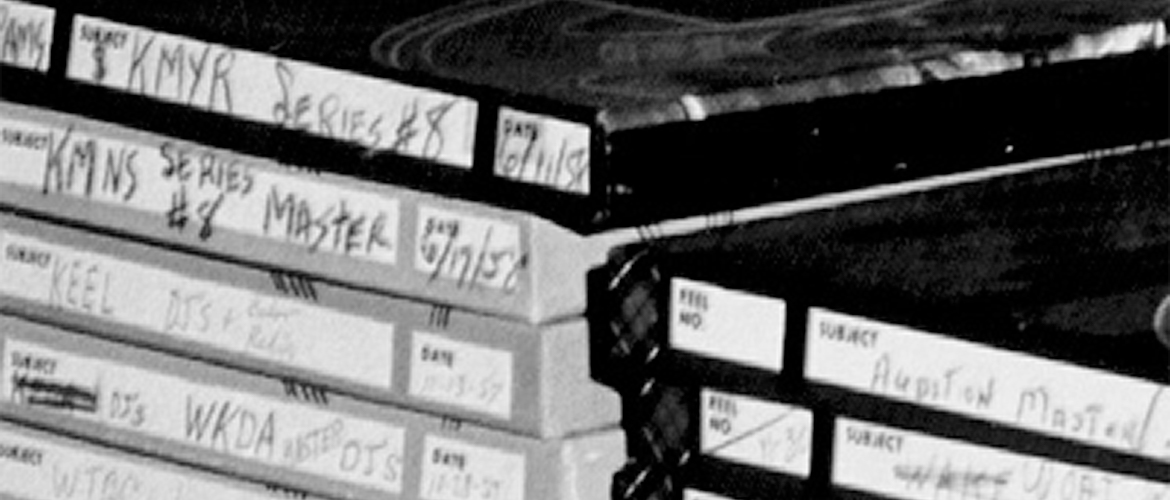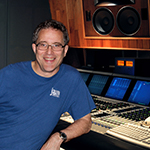No time to read? Listen to the podcast.
If you’re a normal, American person with normal, American hearing, there are three songs you can’t get out of your head: Pomp and Circumstance; It’s a Small World After All; and the jingle for the radio station you grew up listening to, back in the days when there were radio stations.
Sir Edward Elgar is responsible for the first. For the second, thank Disney songwriters Robert B. Sherman and Richard M. Sherman. The honor of third place goes to Bill Meeks.
Before you dash out and write him a thank-you note (or death threat), there’s something you need to know. Meeks didn’t mean to tie up your brain cells with jingles, even though that’s how things worked out. He was in it to make money.
Although that didn’t work out too well, either.
In order for stations to get credit in the ratings, listeners had to positively identify the station, which usually meant recalling the call letters, slogans, or names of programs. Jingles worked to etch these into listeners’ minds.
According to Jonathan Wolfert, founder and president of the country’s largest jingle producer, JAM Creative Productions, “As early as 1947, station identification jingles were used by KLIF in Dallas, Texas. One of the musicians working on KLIF was Bill Meeks. In addition to leading two bands that performed live on the station, Meeks also sold commercial time to the shows’ sponsors. He participated in creating commercials and jingles for those sponsors.”
Sponsor jingles were an old idea, dating back to the early days of network radio. “In 1933, when Jack Benny was on the air, his little band of musicians and singers, like Dennis Day, would sing jingles for Lucky Strike,” Ken Deutsch, a jingle historian and former jingle producer, told me.
Once in a while, the house bands might play a little jingle for the station itself.
These jingles were popular, especially with station owners, because they helped listeners remember what station they were tuned to. And that was music to the owners’ ears. In order for stations to get credit in the ratings, listeners had to positively identify the station, which usually meant recalling the call letters, slogans, or names of programs. Jingles worked to etch these into listeners’ minds.
In the mid-1950s, Meeks had a marketing brainstorm. Why not record the music for a jingle once, and sing it with different call letters? That would spread the most expensive part of a jingle, the music, across dozens of clients, and practically any station could afford to set its call letters to music. Meeks started selling jingles through his company, PAMS, and with that the modern jingle business was born.
And, just in time.
A few years later, Top 40 blared forth from radios across America. “Once people like Todd Storz and Gordon McLendon started using radio IDs on influential stations like WOW in Omaha, and KLIF in Dallas they became a part of the Top 40 culture,” Deutsch said.
Jingles and Top 40 were made for each other.
It wasn’t unusual to find two, three, or in larger cities, four stations all with Top 40 formats. “Setting the station call letters to music made them more memorable,” Wolfert said. And, just as in the 30s, memorable meant higher ratings. “Basically, jingle companies were selling letters of the alphabet.”
As the jingle business exploded PAMS became a giant vacuum cleaner that sucked in money. Unfortunately, Meeks wasn’t the world’s best businessman. As fast as the money came in, he spent it. And then some.
“Eventually he got in trouble with the I.R.S.,” Deutsch recalled, “and they shut him down.” Collectors, and a handful of would-be producers, scrambled to exploit the PAMS music tracks, assuming they were up for grabs.
But Meeks left PAMS so quickly, he forgot one thing. He never legally shut the company down. Wolfert, who had worked for PAMS, paid back the taxes and other fees and, after a few years of legal wrangling, JAM acquired all the rights to PAMS and its classic radio station jingles.
“Some of those jingles are still in use today,” Wolfert said. “We’re still singing new versions for stations using the original PAMS tracks.”
But even if you don’t hear them on the radio, those brain cells of yours won’t let go.
“I have been to different events and I’ve spoken on panels,” Deutsch said, “and people can sing these jingles back to me. Forty years since they’ve heard them. It’s just unbelievable.”
Today’s jingles are shorter than those of the 1960s, and focus on a station’s marketing slogan as well as its call letters. But no matter what your religion, economic status, ethnicity, or gender, jingles did, and still do, spread through the population as rapidly as viruses. And are equally hard to get out of our systems.
When it comes to letters set to music, it’s still a small world, after all.
A tip of the hat to Allan Sniffen of www.musicradio77.com for helping to get this story off the ground.
Start your Sunday with a laugh. Read the Sunday Funnies, fresh humor from The Out Of My Mind Blog. Subscribe now and you'll never miss a post.
Jonathan Wolfert first became interested in the jingle business in the 1960s when he was growing up in the New York City area. Being an avid radio listener, he began to wonder who made those little songs that announced the name of the radio station and sang its praises. Jon discovered that the jingles he’d been hearing and collecting from across the country were made by a small number of very specialized firms, most of which were headquartered in Dallas. It seemed to him that working for a jingle company would be an excellent way to combine his interest and experience in music, audio production, and radio. Jon moved to Dallas in 1971 to work for PAMS, one of the top jingle production houses of the day. About three years later he and his wife decided to create their own company. JAM Creative Productions officially began in November of 1974. By early 1976 the company boasted accounts like WABC (at that time the #1 rated station in America), and England’s prestigious BBC. Today JAM creates IDs and custom music for top clients all around the world. “It’s a lot of work,” Jon likes to say, “but it’s better than having a real job.”
While Ken Deutsch enjoyed careers as a radio disc jockey and public television director/producer in the 1970s, he hit upon his true calling when he founded Ken R. LLC, a jingle recording studio, in 1977. During the next 30 years he and his merry band of singers and musicians produced jingles heard around the world for clients including United Airlines, Pizza Hut and thousands of radio and Internet stations. This was also the period in which Ken wrote four eBooks, all of which are available incredibly cheaply through Amazon (https://www.amazon.com/s/ref=nb_sb_noss/160-7382931-8795936?url=search-alias%3Dstripbooks&field-keywords=Ken+R+Deutsch) Ken is now a full time resident of Sarasota, Florida where he works from home transcribing closed captions online to assist deaf and hard of hearing people. He also writes for Radio World, restores audio and practices his photography and Photoshop skills. Drinking nothing but tea and water has earned him a nickname from his wife: “Mr. Excitement.”
Mind Doodle…
In the post-PAMS years, one of the purveyors of illegal PAMS jingles was Bill Meeks himself. He literally stole back his own music tracks and, for a brief while, was making jingles again.



For some reason the WKRP jingle was the only one that kept running through my head.
Hi Robbie…
You can listen to all sorts of radio jingles on the internet. I think they’ll still stick in your head.
— jay